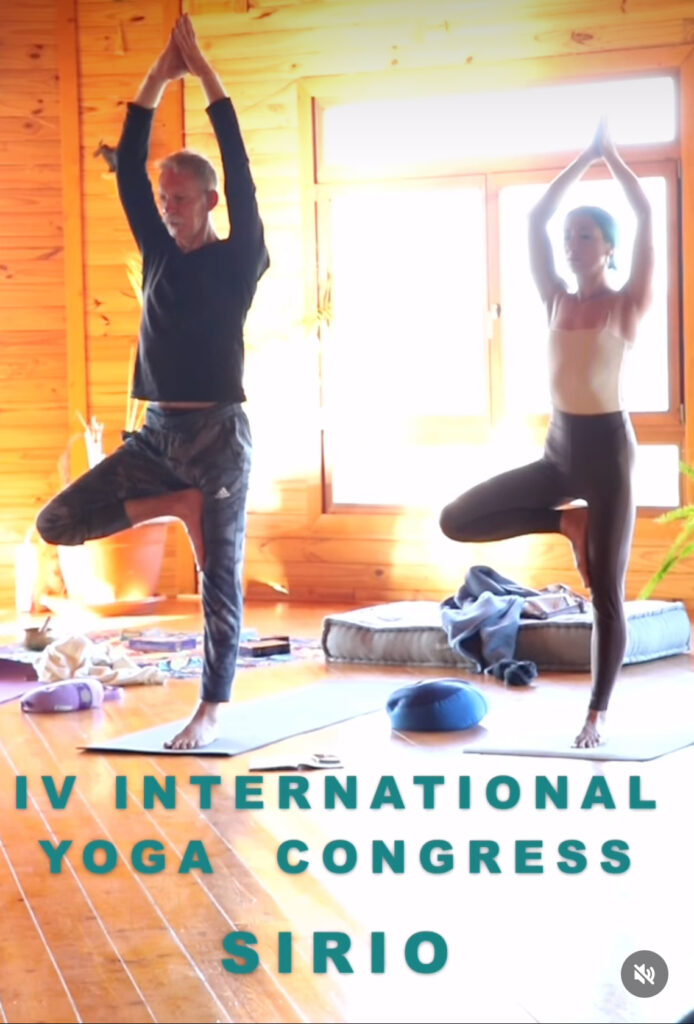
It is estimated that 72.4 million women globally experience fertility problems and the impact in their lives is far-reaching. Fertility problems impinge on an individual’s physical health and their relationships with others while also adding pressure onto work and social situations. Fertility problems for some couples may mean achieving a successful pregnancy having experienced repeated miscarriage, while for others their experience of infertility is ‘secondary infertility’ – where they have had a child in the past but are unable to conceive a subsequent child. Infertility problems affect 1 in 6 couples worldwide, although for the individual and couple coping with infertility issues, it can feel like an isolating and lonely experience.
In 2013, I undertook research with 228 fertility patients using the fertility quality of life measurement tool FertiQoL. This tool was developed over eight years by the American Society for Reproductive Medicine (ASRM) and the European Society of Human Reproduction and Embryology (ESHRE) in collaboration with Cardiff University and the biopharmaceutical company Merck Serono. It assesses the impact of infertility issues across important areas, such as ‘general health, self perceptions, emotions, partnership, family and social relationships, work life and future life plans’. The areas impacted most negatively by experiencing fertility problems included self-esteem, emotions, social situations and future life plans. The participants reported the following:
- 57 per cent expressed that their attention and concentration were impaired by thoughts of infertility.
- 46 per cent described feeling ‘completely’ or ‘to a great extent’ ‘drained or worn out because of fertility problems’.
- 83 per cent expressed that they fluctuate between hope and despair very often due to their fertility problems.
- 80 per cent stated that they experience symptoms of grief.
There is also heightened stress in the body. It is common for the body to grow tense when experiencing fertility-related physical examinations or giving oneself injections of hormones, and this can increase feelings of disconnect from our physical self. Discomfort and pain, or thoughts that one’s body isn’t doing what it ‘should’ do, exacerbate feelings of mistrusting the body. The mind continues to be busy and plan while the body feels tired and ill at ease. This frequently leads to an anxious, busy mind which feels out of rhythm with one’s body. Commonly, this leads to an experience of ‘emotional burnout’; a form of physical and mental exhaustion that is not so easy to recover from. It can also lead to having a negative impact on relationships. Sitting with ongoing uncertainty – being unable to know what the future holds and how they can plan ahead can put immense pressure on the individual and the relationship. They often feel their lives are stuck while other’s e.g. friends and family plan and move forward with ease. This triggers a desperate need for certainty and involves a state of being that is either pre-occupied about future fears or regrets about the past and this way of thinking is very often accompanied by constant self-criticism e.g. “I should have tried sooner. How could I have been this foolish.”
Mindfulness Yoga offers the potential to reconnect with one’s self through mindful movement and as mindfulness is healing on a physical and emotional level it can support the individual and couple to work through fertility-related issues in a more embodied way, with mind, body and spirit working more harmoniously.
Mindful yoga is a form of physical movement that focuses on the healing potential of asanas with meditation, rather than overusing our muscles and aiming to push them to their limits. It works with what feels natural for our body and reduces the physiological response we experience when we are stressed. The physicality of exercising in this way includes a focus on body alignment and has been attributed to improving muscle and joint health, as well as benefiting the cardiovascular system and normalizing blood sugar levels, promoting hormone balance. Yoga has also been attributed with supporting a reduction in inflammation and an improved immune system, which is naturally beneficial to fertility health.
Mindfulness yoga allows the body to move in a variety of poses while practising breathing techniques aimed at supporting the individual to unify the body and mind. In theory, you are exercising the body while stilling the mind. As one consciously reconnects to their body, they release mind and body tension and tend to move towards increased self-care with more compassion. With this approach, it can potentially be easier to face fertility-related difficulties and experience more equanimity in their day-to-day living responses.
Mindful Yoga Poses or Asanas
The yoga pose sequences in Mindfulness yoga include forward folds, gentle twists, chest or ‘heart’ openers, and pelvic floor exercises to help strengthen the body and release tension. The Asanas can be supported with the use of yoga blocks, bolsters and blankets/pillows to ease one into the postures and promote deeper relaxation. This approach also signifies an investment in self-care and supports a friendliness towards oneself which can offset the harsh experience of self-injections, examinations and hormone treatment.
Asanas are combined with breathwork techniques (known as Pranayama) to support the sympathetic nervous system and create an internal emotional balance. This is beneficial as there are many fluctuating emotions associated with fertility problems, including; sadness, joy, frustration, relief, distress, envy, worry, anxiety, enthusiasm, surprise, guilt and despair, to name a few!
A regular Mindfulness yoga practice can help elicit a release of tension within one’s body and mind. It aims to promote deep relaxation within and enables one to let go of mental stress over time. By becoming one’s own caregiver, it can foster an attitude of inner kindness and this sense of self-compassion acts as a guide initially through the poses and then extends to daily living. By practising each day – at the beginning and/or end of one’s day
this promotes longer term rejuvenation and rest. Fertility related problems tend to increase tension and self-doubt and having a daily mindful yoga practice can minimise this potential.
Creating a mindful space, using a ‘less is more’ approach will offer more opportunity for clarity of mind at a time when many individuals tend to feel more chaotic and get caught up in trying to future proof outcomes. The practice of moving harmoniously from one pose into the next helps to bring more presence to the individual as they focus in the ‘here and now’ moment rather than trying to predict the future. The mindfulness meditation integrated before, during or after the sequence helps to support the individual to remain more aware and less caught up in the fluctuations of the mind. Our culture encourages us from a young age to be competitive and to do and achieve more. In contrast, mindfulness yoga allows one to be more consciously in the present, rather than planning or doing more. It can feel uncomfortable to let go physically if one is used to being a ‘must do’ busy person. The intention is to develop a deep sense of ease, gained by connecting to a more neutral sensation, one of self-care – rather than constantly striving for better.
A Mindfulness Yoga sequence for fertility patients, is aimed at grounding and soothing the body. It is focused on bringing some healing to those going through the rigours of fertility testing and treatment. An anxious body can lead to an anxious or depressed mind and paying attention to reducing the tension in the body leads to the mind feeling calmer and more alert. The breathwork integrated into the sequence aims to elicit the relaxation response, which in turn calms the nervous system. The sequence is aimed towards facilitating the individual to connect deeper into their body with each breath rather than over-focusing on their thinking mind.
The Healing Breath Exercise
The healing breath exercise is straightforward and if integrated regularly it can contribute towards easing internal tension as one benefits from conscious deep and slow ‘in’ and ‘out’ breathing thus helping to calm the nervous system. It can be integrated at the beginning of a mindful yoga practice to slow the mind and body.
Practising this exercise helps the body to self-soothe, reducing feelings of panic or fear. This breathwork can be used when attending scans or other medical procedures which may need to be undertaken as part of fertility treatment. An example of a short breath-work sequence is below:
Mindfulness Breathing
- Sit comfortably with your back in an upright position.
- Position the tip of your tongue at the back of the ridge at the base of your front teeth.
- Drop your jaw, relax your tongue. Breathe out fully through your mouth.
- Now close your mouth with your tongue still in place and inhale deeply through your nose for a count of four.
- Once you have inhaled, hold your breath for 3, 2, 1.
- Exhale slowly and release fully through the nostrils for a count of four.
- Repeat this deep breath inhale and exhale three times taking the focus away from the thoughts and just returning to each inhale and exhale.
- If the mind is busy, focus internally on repeating ‘In calm’, ‘out, letting go’ with each inhale and exhale.
Diaphragmatic Breathwork
One can move easily from the healing breath exercise into more mindful yoga-focused diaphragmatic breathing. Awareness-focused breathwork is an important component of mindfulness yoga as it eases one into the pose. Taking natural, long and deep breaths into the abdominal area and letting go of those breaths as though releasing them from the entire body helps to bring your body back into balance. This also means that the individual has a resource when they attend the many clinic appointments throughout their treatment. Time spent in the waiting room can now include some mindful breathing to reduce the internal stress – physically and psychologically. The individual can notice where any areas of tension is located in their body and direct their breath towards these areas. In learning to just observe sensations, feelings and thoughts without becoming overly engaged with them, they are in a better position to let go of mental activity. This will support them in their treatment decision making processes.
Mindfulness yoga asanas
In addition to suggested asanas outline above, mindfulness yoga sequence to support fertility may include a gentle flow sequence to help keep the mind and body in the flow of the present moment to moment experience.
This can be punctuated with the child’s pose to help them to feel fully supported and grounded as it is very calming. The aim is to maintain physical comfort throughout, a welcome break from all the intrusive testing and treatment.
When planning a Mindful Yoga sequence for women experiencing fertility issues, it would also be beneficial to include a supported bridge pose to help release tension in the hip flexors. It also expands the muscles in the chest and abdominal area, a part of our body often associated with stress retention, especially for women administering hormone injections for IVF. It would also be important to include a supine twist pose, to loosen up the back and hip areas and inversion poses to help to increase balance and relieve stress. They are also recommended to aid circulation and increase concentration. As with most yoga poses, they are beneficial to both mind and body. It is worth noting that if offering this sequence that inversion poses are generally not recommended to undertake during menstruation.
Rather than end a mindfulness yoga sequence with Savasana, the progressive muscle relaxation exercise could promote a deeper relaxation experience.
Progressive Muscle Relaxation Exercise
Progressive muscle relaxation (PMR) was developed by an American physician and psychiatrist, Dr Edmund Jacobson, in the 1920s. This exercise aims to engage tension in the muscles and then relax them at a deeper level, contrasting tension with relaxation in each muscle group progressively. Daily life stresses are often carried in our body and we do not necessarily notice the levels of tension increasing. Fertility patients are often combining their treatment with busy work schedules and other demands. PMR helps the individual to recognize how they are responding physically and supports them to release any muscular tension that they are holding. This is a tension releasing and nurturing variation to bring a mindfulness yoga sequence to a close.
Mindful Walking Meditation
It would also be recommended to teach Mindfulness walking meditation to those experiencing fertility related issues. It is not uncommon that clients are pre-occupied with past regrets or future worries. These thoughts can be distressing and trigger feelings of despair. Mindful walking meditation is an antidote to this way of moving through one’s day. It is easy to get lost in the mental activity associated with planning fertility budgeting, appointments and time-off from work. Mindful walking is a reflective alternative to sitting meditation and can be used at different times throughout the day which may be easier for someone undertaking treatment.
As with mindfulness yoga, mindful movement aims to contribute towards an inner ease, rather than journeying from A to B with determination and a racing mind! Always being in a hurry can add extra internal stress to a challenging experience. Whether one is walking from a consultant’s office to a waiting room or from the desk to the conference room, mindful walking allows one to connect and focus on one’s physical experience – how the body moves, and what feelings and sensations are present while one is in motion. Doing this even once a day ensures that one has taken some moments to check in with oneself, something that is often forgotten when meeting other needs. Mindful movement helps to focus the mind and provide clarity of thought, supporting one to respond rather than react to the immediate stimulus. This is very important in a fertility related process that can often trigger an avalanche of uncomfortable feelings. Although it may seem relatively easy to slow down ones body rhythm, in practice it can be very challenging. It can highlight when the individual is feeling agitated or distracted, as the tendency is to want to move faster rather than to slow down and relax into one’s body. If the mind is very busy, it can help may to repeat an internal cue such as ‘walking slowly, walking slowly’ with the aim of matching one’s breath to the slow and intentioned walking movement.
Individuals can vary their mindful walking meditation by focusing on the environment, rather than one’s internal process, while they walk. By deeply connecting with the colours, textures and shapes in their immediate environment, they let go of being overly focused on planning and strategizing for fertility treatment or a perceived future. Over time this leads to less internal stress, more self-acceptance and a balanced approach to the problems they are facing.
References:
European Society of Human Reproduction and Embryology (July 2014). Assistant Reproductive Treatment Fact Sheet, www.eshre.eu/guidelines-and-legal/ART-fact-sheet
Bracken A. (2016), Mind-Body-Baby, Hodder & Stoughton Publishers, London
Jacobson, E. (1938). Progressive Relaxation. Chicago: University of Chicago Press
Boccio, F. (2004), Mindfulness Yoga. Wisdom Publications: Boston


 It is estimated that 72.4 million women globally experience fertility problems and the impact in their lives is far-reaching. Fertility problems impinge on an individual’s physical health and their relationships with others while also adding pressure onto work and social situations. Fertility problems for some couples may mean achieving a successful pregnancy having experienced repeated miscarriage, while for others their experience of infertility is ‘secondary infertility’ – where they have had a child in the past but are unable to conceive a subsequent child. Infertility problems affect 1 in 6 couples worldwide, although for the individual and couple coping with infertility issues, it can feel like an isolating and lonely experience.
It is estimated that 72.4 million women globally experience fertility problems and the impact in their lives is far-reaching. Fertility problems impinge on an individual’s physical health and their relationships with others while also adding pressure onto work and social situations. Fertility problems for some couples may mean achieving a successful pregnancy having experienced repeated miscarriage, while for others their experience of infertility is ‘secondary infertility’ – where they have had a child in the past but are unable to conceive a subsequent child. Infertility problems affect 1 in 6 couples worldwide, although for the individual and couple coping with infertility issues, it can feel like an isolating and lonely experience.
